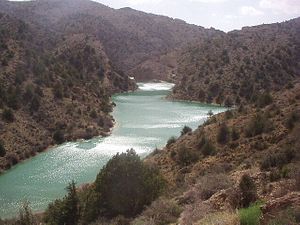Iran accused Pakistan of allowing militants to enter its eastern province of Sistan and Baluchestan after an attack on Iranian border guards last week killed two border police officers and injured many others. This means that in the past few months, officials in all four of Pakistan’s neighbors – Afghanistan, China, India, and Iran – have accused Pakistan of allowing militants to enter their borders from its territory. It is unclear as to whether Pakistan has no control over militant groups on its border with Iran due to design or inability. Regardless, Iran is upset with Pakistan for allowing sanctuaries to continue to exist within its borders.
Tensions have increased further due to the fact that Iranian forces entered Pakistan last week to fight militants whom Tehran believes Pakistan has done nothing to curb. This resulted in a clash with Pakistani border guards in which a Pakistani paramilitary officer was killed. Pakistan, however, had denied Iran’s allegations that militants attacked Iran from Pakistan and asked Iran not to “externalize its problems.”
The militants who attacked Iran are ethnic Baloch, an Iranian (the Baloch language is related to Persian) Sunni ethnic group that lives in the eastern Iranian province of Sistan and Baluchestan and the western Pakistani province of Balochistan. Baloch militants have been attacking Iran from both Pakistan and from inside of Iran for several years, but these attacks have been increasing lately. The militants are organized into several groups including Jundallah and Jaish ul-Adl. Iran has accused Saudi Arabia of funding Jaish ul-Adl and Pakistan of turning a blind eye to them. Both Iran and Pakistan have summoned each other’s ambassadors, and demanded explanations.
Iran and Pakistan have increasingly become more hostile toward each other due to strategic and sectarian tensions. South Asian Islam in general has not usually experienced much of a divide between Sunni and Shia Islam as compared to the Middle East. This is perhaps because both groups stuck together as Muslims in a region where Muslims were the minority. Although Sunnis are the majority of South Asian Muslims, the region has the greatest population of Shias outside of Iran.
Pakistan’s tradition of Sunni-Shia solidarity continued for its first two decades and its relations with Iran were based on political, not religious concerns. However, things began to change in the late 1970s when sectarian concerns began to become important. After the military overthrow of Pakistan’s civilian government in 1977 by Zia ul-Haq, Pakistan began to drift towards Sunni-directed Islamization. Iran’s 1979 Islamic revolution turned it into an explicit Shia state and had the effect of making Pakistan even more explicitly Sunni as Shias were seen as a fifth column.
Throughout this period, Pakistan and Saudi Arabia developed warm relations. Pakistani military forces help protect Saudi Arabia while Saudi Arabia funnels money into Pakistan’s military and religious establishments. Even though Pakistan continues to cooperate with Iran in some sectors due to their geographic proximity, it is increasingly clear that Pakistan is closely aligned with the Saudi camp. Perhaps it has no desire to stop militants from causing Iran some discomfort, as that would help the goals of many domestic players in Pakistan as well as the goals of its benefactor, Saudi Arabia.

































